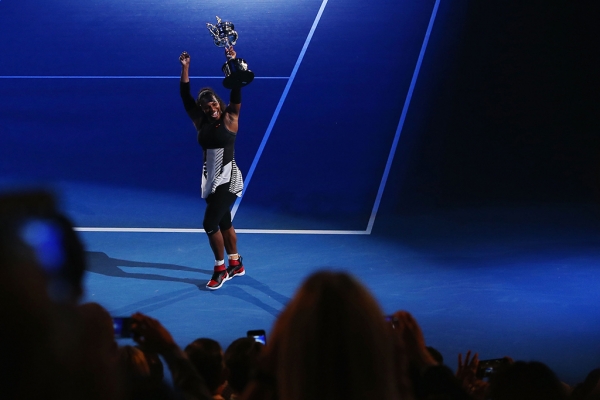A trio of legends tower above all others when it comes to Australian Open success in recent history.
Novak Djokovic, Serena Williams and Roger Federer have combined to win 21 of the past 36 AO singles trophies available, dating back to 2003.
For all three, their most recent Grand Slam title has come at Melbourne Park.
Djokovic’s tally of eight men’s singles titles is unmatched at the tournament, while Williams has won an Open-Era record seven women’s titles. Federer owns six, clinching four in a fruitful period from 2004 to 2010.
Their dominance is further highlighted when you consider the active player with the next highest number of AO titles, Victoria Azarenka, has two.
Novak Djokovic
It was Federer who described the tournament as the Happy Slam but it is the happiest hunting ground for Djokovic, who is undefeated in eight AO finals and semifinals.
His fourth-round loss to Federer in 2007 is the only time the Serb has fallen to another “Big Four” member at the event; he is since a combined 11-0 against Federer, Rafael Nadal and Andy Murray.
“I've had a love affair with Rod Laver Arena for many years and I hope it can last a long time,” Djokovic said after beating Murray to win the 2016 title.

Melbourne Park was where Djokovic broke through for his first Grand Slam victory in 2008.
It is where, in 2013, he became the first player in the Open Era to win three consecutive Australian Open titles.
It is where he dealt chief rival Nadal the heaviest Slam final defeat of the Spaniard’s career, in 2019.
And in 2020, it was where he nudged his AO match-winning percentage above 90 – the best of any active player.
Serena Williams
The best record among active female players belongs to Williams, who has won 87.9% of her Australian Open matches; the 87 matches she has won are the most of any woman in the event’s history.
Like Djokovic, Serena was flawless in AO finals, winning her first six until Angelique Kerber stopped her in 2016.
The manner in which Williams rebounded was telling; she returned a year later and won her seventh without dropping a set, all while two months pregnant with daughter Alexis Olympia.

“My first Grand Slam (appearance) started here (in 1998), and getting to 23 (major titles) here … I couldn't have written a better story,” Williams said after becoming the oldest female Grand Slam champion in Open Era history. “It's a great feeling. No better place to do it than Melbourne.”
Rod Laver Arena is where Williams has produced some of her finest comebacks.
She won semifinals against Kim Clijsters (2003) and Maria Sharapova (2005) after they held multiple match points. She defeated Nadia Petrova (2007) and Svetlana Kuznetsova (2009) after both Russians served for those matches. She beat Victoria Azarenka after trailing 6-4 4-0 in the 2010 quarterfinals.
Roger Federer
Comebacks have also come to define Federer’s Australian Open story.
His triumph in 2017, at age 35, came seven years after his last at Melbourne Park, and was achieved immediately following a six-month layoff due to knee surgery the previous season.
He beat four top-10 opponents to win that year, more than any male champion has beaten since the tournament moved to Melbourne Park in 1988.
Comebacks continued at AO 2020 when he saved seven match points to oust Tennys Sandgren, a victory sending Federer through to a 15th Australian Open semifinal – the most of any male player at a single Grand Slam tournament in history.
His consistency at the tournament is unrivalled; from 2004 to 2018, he fell before the semifinals just once. As a result, he is the only player ever to have notched more than 100 Australian Open singles match victories.
“It all started for me here. I played the quallies here in '99, the juniors in '98. Won my first match maybe against Michael Chang here back in 2000,” Federer said.
“I go way back. Always loved coming here.”
That final statement is true for all three of these Australian Open legends, who will make the trip to Melbourne for AO 2021 bidding to build even more on their incredible tournament records.